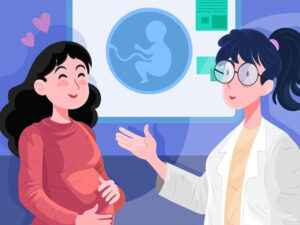Infertility is the major complication of endometriosis – One in three or one in two women find it difficult to get pregnant with endometriosis.
Endometriosis is a condition in which the tissue similar to the one that lines the uterus (endometrium) grows outside the uterus. It is a painful condition. The abnormal tissue forms scars and adhesions and finds no way to exit the body and thus causes symptoms. Endometriosis involves tissues lining the ovaries, pelvic region and fallopian tubes.
When endometrial tissue takes ovaries into its fold, endometriomas may form. Tissues that surround ovaries become irritated and develop into scar tissues and adhesions. The abnormal fibrous tissue makes pelvic organs and tissues to stick together. Women who develop this condition experience severe pain during menstruation and may also develop fertility problems. Whatever may be the cause of endometriosis and infertility, effective treatments are available.
What causes Endometriosis?
The exact cause of endometriosis is unknown. The following are some of the possible explanations:
According to induction theory proposed by experts, peritoneal cells that line the inner side of the abdomen may transform into endometrial like cells due to some immune and hormonal factors.
Disorders of the immune system may affect immune cells’ ability to recognize endometrial cells as different and thus prevent their destruction outside the uterus.
Circulatory system or lymphatic system may transport endometrial cells to other parts of the body.
After a C-section or hysterectomy, endometrial cells may attach to surgical incision.
During the early stages of development, embryonic cells may transform into endometrial cells.
Retrograde menstruation – menstrual blood with endometrial cells may flow back through the fallopian tubes into the pelvic cavity. The endometrial cells present in menstrual blood may stick to surfaces of pelvic organs and pelvic wall and cause endometriosis.
The following factors put a woman at risk of developing endometriosis:
- Early Menarche
- Late Menopause
- Heavy menstruation
- Shorter periods (less than 27 days)
- High levels of Estrogen
- Low BMI
- Family history of endometriosis
- Reproductive tract abnormalities
- Never giving birth
Endometriosis Symptoms
Women who have endometriosis may experience severe pelvic pain with menstrual cramps. The pain begins before period and continues for several days into the periods. The pain becomes progressively worse and increases over time. Sometimes, occasional heavy bleeding and bleeding between periods may occur.
Abdominal pain, constipation, bloating, persistent lower back pain, urinary problems, bowel issues, fatigue, nausea, vomiting and pain during intercourse are the other symptoms.
In some cases, endometriosis is first diagnosed in women who are seeking infertility treatment. The symptoms associated with endometriosis often mimic the symptoms of other common conditions, such as ovarian cysts, pelvic inflammatory disease (PID) and IBS. Furthermore, an advanced stage ovarian cancer is also associated with similar sort of symptoms.
How Does Endometriosis Affect Fertility?
Endometriosis affects fertility in different ways – causes obstruction and damage to the egg and sperm – it prevents the sperm and the egg from uniting and fertilization. Though conceiving is an issue for women with endometriosis, with a mild problem many women can still conceive and complete a full-term pregnancy. Gynaecologists, therefore, advise women with endometriosis not to delay pregnancy – otherwise, the problem may worsen over time and cause complications.
Ovarian Cancer Risk with Endometriosis
In women who have endometriosis, the rate of ovarian cancer development is higher-than-expected. However, the overall lifetime risk of developing ovarian cancer is very low with endometriosis. There are a few studies that indicate the risk of ovarian cancer with endometriosis, but it is relatively low. A very rare possibility of developing endometriosis-associated adenocarcinoma is there in women who have had endometriosis.
Bottom Line
Endometriosis can progressively worsen over a period of time. In addition, the symptoms associated with this condition are often confusing for many women as they mimic the symptoms of other conditions – such as PID, ovarian cysts and even ovarian cancer. Therefore, you must seek an appointment with a gynaecologist if you think you could be at risk.
Read more – Diagnosis and treatment of Endometriosis
Dr Rajeshwari Reddy
Senior consultant gynaecologist, Obstetrician & Laparoscopic Surgeon
Best doctor for endometriosis in Hyderabad




